probe
Latest

Facebook reportedly invites federal oversight of its privacy practices
During Facebook's F8 keynote this week, the company repeatedly hammered one idea: the future is private. While its privacy-focus might be flawed, it looks like Facebook is putting its money where its mouth is. According to The Washington Post, the company told the US government it's open to greater oversight of its data-collection practices, in exchange for ending a federal probe into a series of privacy flops that surfaced last year.
Christine Fisher05.03.2019
Israel's Moon probe snaps a final photo before crashing
The Beresheet spacecraft from Israel's SpaceIL was facing long odds to land on the Moon, being the first ever privately launched probe to attempt it. Alas, its engine cut out during the landing attempt, communication was lost, and Beresheet crashed into the surface. Fortunately, just before that happened, the spacecraft turned its camera toward the Moon's horizon and managed to snap a final, sublime photo of its cratered surface.
Steve Dent04.14.2019
Several states are investigating Facebook for mishandling user data
Already the subject of a number of federal probes, Facebook is also the target of investigations being conducted at the state level, according to Bloomberg. The Attorneys General for Connecticut, Illinois, Massachusetts, New York, New Jersey and North Carolina are all involved in ongoing efforts scrutinizing how Facebook handles user data. The investigations were primarily triggered by the revelation of the Cambridge Analytica scandal.
AJ Dellinger02.01.2019
NASA launches Parker Solar Probe in mission to 'touch' the Sun
After a few delays, the Sun-chasing Parker Solar Probe is on its way. NASA launched the spacecraft aboard a ULA Delta IV Heavy rocket at 3:31AM Eastern this morning (August 12th) and confirmed that the vessel was healthy at 5:33AM. The probe still has a ways to go before it's conducting scientific studies. It'll spend its first week in space deploying its high-gain antenna, the first part of its electric field antennas and its magnetometer. In early September, the probe will start a roughly four-week instrument shakedown to be sure it's ready for science gathering.
Jon Fingas08.12.2018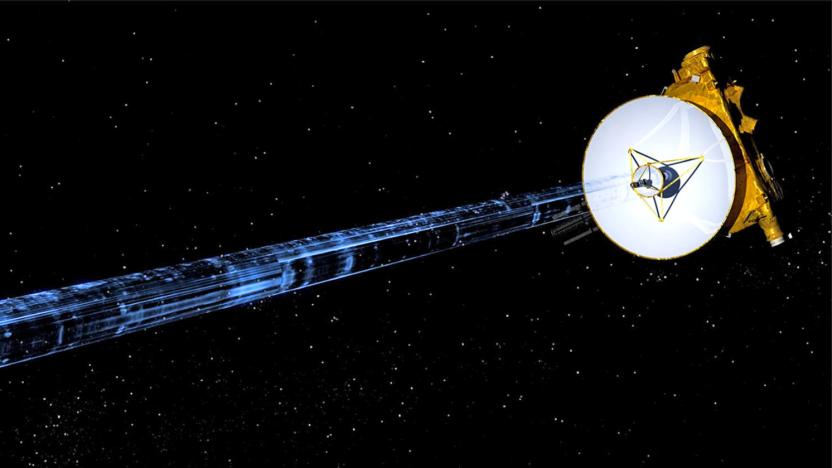
New Horizons probe may have detected Solar System's hydrogen 'wall'
Scientists have learned a bit about the edge of the Solar System from Voyager 1, but there hasn't been a lot of corroborating data without follow-up spacecraft. They appear to be getting a second chance, though. NASA's New Horizons spacecraft has detected what appears to be a "wall" at the edge of the Solar System where interstellar hydrogen gathers as it collides with the solar wind -- in other words, the very edge of the Sun's influence. Researchers found it by capturing a 360-degree snapshot of ultraviolet emissions around the probe, revealing an unusual brightness (potentially bunched-up hydrogen) similar to a signal the Voyager mission detected 30 years ago.
Jon Fingas08.12.2018
The fastest human-made object launches for the Sun this Saturday
If the weather remains favorable and everything goes according to plan on August 11th, NASA is sending a spacecraft to the sun. The Parker Solar Probe will go closer to the massive ball of gas and plasma keeping our solar system together than any other spacecraft has gone before. It will brave extreme temperatures reaching up to 2,500 degrees Fahrenheit to collect data and images of the sun's atmosphere called "corona." The spacecraft will also reach speeds up to 430,000 mph, making it the fastest-ever human-made object. That's nowhere near fast enough to reach Alpha Centauri within our lifetime -- it has to travel around 7,000 years to reach the star closest to our sun -- but fast enough to get from Philadelphia to DC in a second.
Mariella Moon08.09.2018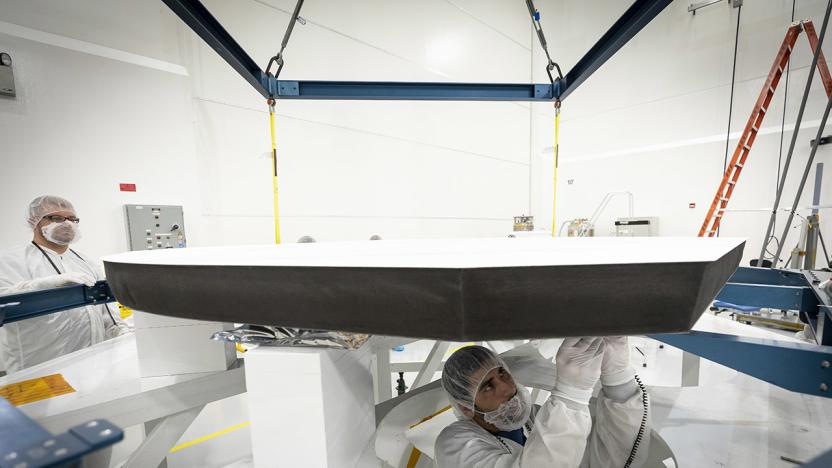
NASA's sun-bound probe just got a super heat-resistant shield
NASA's sun-bound Parker Solar Probe was already set to fare better than Icarus, but it just got some serious fortification. The space agency has announced that the vessel has been fitted with an eight-foot Thermal Protection Shield that will be exposed to temperatures of up to 2,500 degrees Fahrenheit when the probe flirts with the hottest star in our solar system in late 2024.
Katrina Filippidis07.06.2018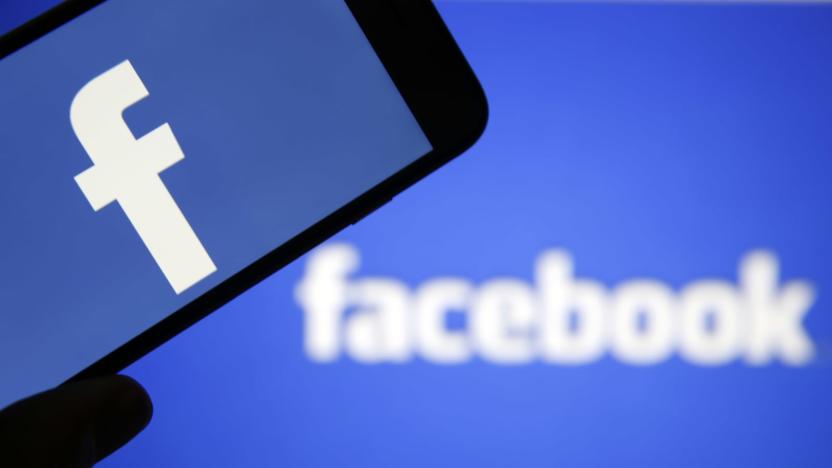
Facebook hit with fine in South Korea for limiting user access
South Korea's telecommunications regulator is fining Facebook 396 million won (approximately $396,706) for slowing users' connections in 2016 and 2017. ABC News reports that the Korea Communications Commission (KCC) began investigating Facebook's actions last May and determined that the company had violated a law prohibiting the unnecessary limitation of user access. The problem arose when the social media giant began rerouting some South Korean users' Facebook access to networks in Hong Kong and the US. In some cases that caused connections to slow by as much as 450 percent.
Mallory Locklear03.21.2018
Existing EV batteries could be recharged five times faster
Lithium-ion batteries have massively improved in the last half-decade, but there are still issues. The biggest, especially for EVs, is that charging takes too long to make them as useful as regular cars for highway driving. Researchers from the University of Warwick (WMG) have discovered that we may not need to be so patient, though. They developed a new type of sensor that measures internal battery temperatures and discovered that we can probably recharge them up to five times quicker without overheating problems.
Steve Dent02.20.2018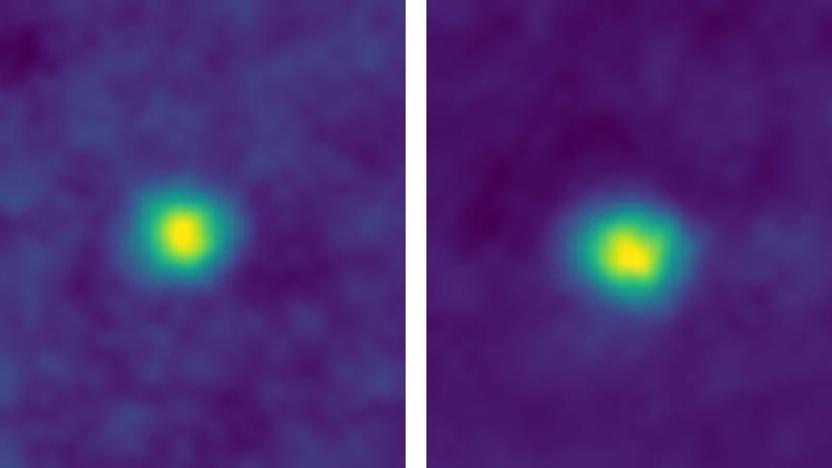
New Horizons probe captures images at record distance from Earth
Voyager 1 has held the distance record for a captured image for the past 27 years thanks to its legendary "Pale Blue Dot" photo (3.75 billion miles away from Earth), but that milestone just got smashed. NASA's New Horizons probe took pictures of Kuiper Belt objects at a distance of over 3.79 billion miles from our cosmic home on December 5th. They weren't technically the first images to break the record, though -- an image of the "Wishing Well" star cluster from two hours earlier (below) has that honor.
Jon Fingas02.11.2018
Justice Dept and SEC are reportedly reviewing Apple’s iPhone slowdowns
In December, Apple admitted to slowing older models of iPhones, saying the practice kept older phones with aging batteries from suddenly rebooting. Apple is now facing multiple lawsuits in the US and abroad as well as an investigation in France. And now, Bloomberg reports, the US Department of Justice and the Securities and Exchange Commission are looking into whether the company's handling of the slowdowns violated any securities laws.
Mallory Locklear01.30.2018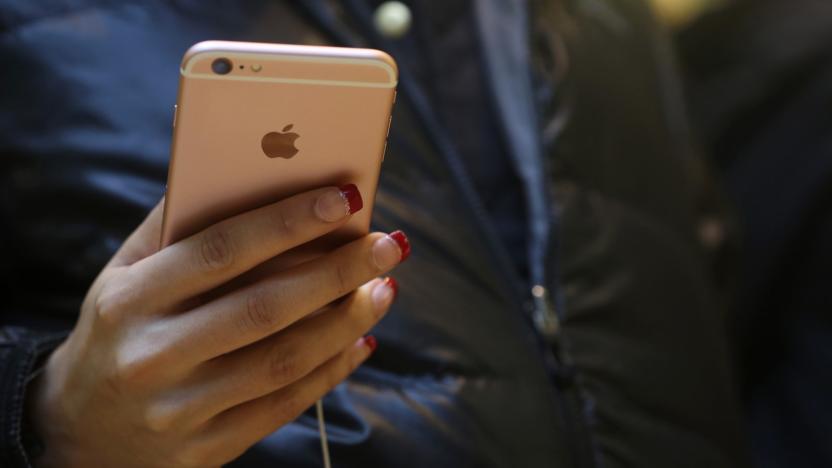
French officials investigate Apple for iPhone slowdowns
Last month, French organization HOP (which stands for Stop Planned Obsolescence in French) filed legal complaints against Apple after the company admitted to slowing older models of iPhones. Now, Bloomberg reports that French authorities have begun a preliminary investigation into the company in regards to accusations of "programmed obsolescence" and "deceit."
Mallory Locklear01.09.2018
Cassini's life passes before its eyes in NY art exhibition
Cassini became a cultural touchstone not just because it was a useful and productive space probe, but because it completed a classic hero's journey. So it's fitting that an art exhibition presented by the WOW visual design studio at HGPRP Gallery in New York City celebrates the life of the probe not in technical, but abstract terms. "It's been said, just before a person dies their life's biggest moments flash before their eye," WOW writes. "Fleeting moments and flashbacks allow viewers to celebrate 20 years of Cassini's achievements in a very personal, non-linear, stylized exhibition."
Steve Dent09.25.2017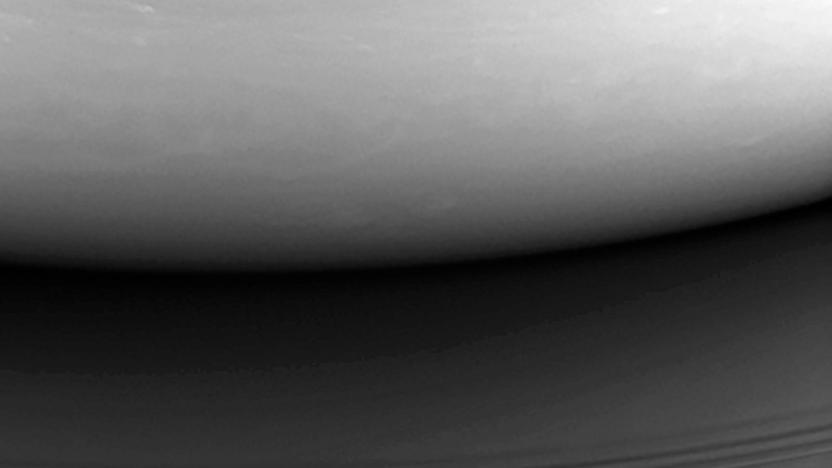
Cassini mission ends with final plunge into Saturn
At around 7:31 AM eastern time, the Cassini-Huygens spacecraft disintegrated and plunged into Saturn, becoming the only man-made object ever to touch our solar system's second largest planet. "The signal from the spacecraft is gone and within the next 45 seconds, so will be the spacecraft," said NASA JPL Cassini program manager Earl Maize. "This has been an incredible mission, an incredible spacecraft, and you're all an incredible team."
Steve Dent09.15.2017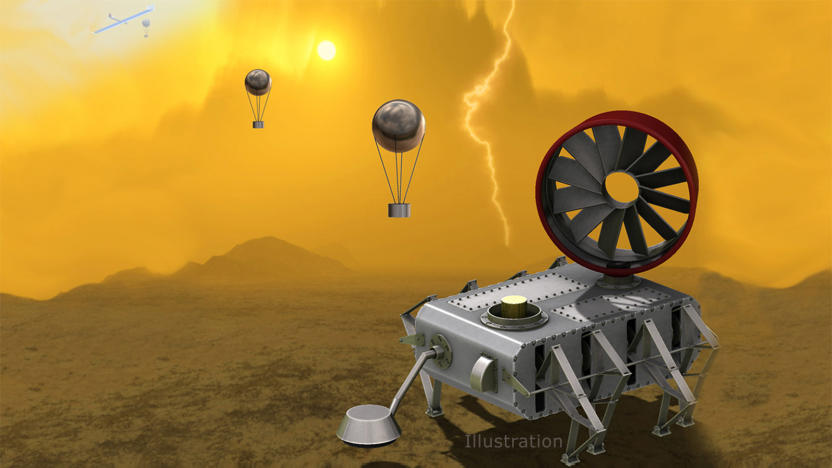
NASA goes Steampunk for its future Venus probes
NASA knows better than any of us that what seems normal today was once science fiction. So, it isn't afraid to bet some cash on some fanciful space projects via the NASA Innovative Advanced Concepts (NIAC) symposium. This year, the agency looked at projects it calls "little more than ideas," including a Venus probe inspired by famed Dutch artist Theo Jansen, the creator of wind-powered "Strandbeests."
Steve Dent08.28.2017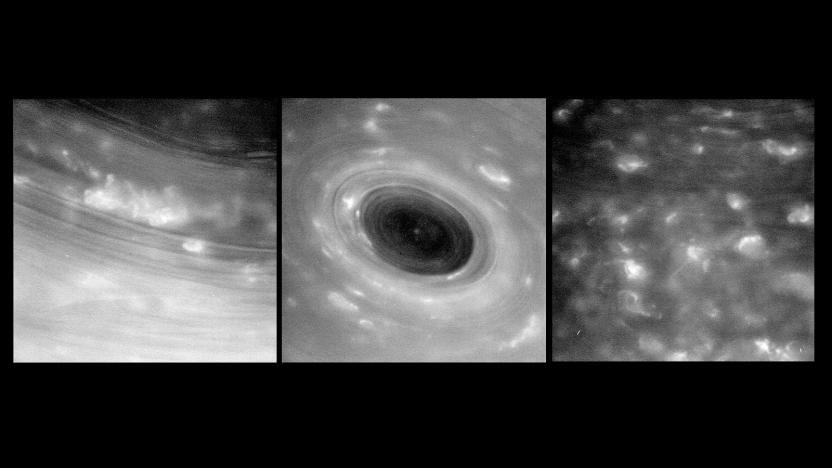
Cassini probe survives first dive between Saturn and its rings
NASA's Cassini probe has emerged unscathed after its first dive between Saturn and its rings. The spacecraft's ground team had to spend 20 hours wondering whether the probe was doing well or whether it plunged to its death a few months too early. Thankfully, it got back in contact with NASA at 2:56AM EDT today, April 27th. By 3:01 AM, it started beaming back precious data about the planet's atmosphere, including the unprocessed images of Saturn's features above.
Mariella Moon04.27.2017
NASA seeks comet 'crumbs' with a new detection technique
It's relatively trivial to spot comets, but spotting the dust they leave behind? That's no mean feat -- it's like tracking grains of fast-moving sand on a cosmic-scale beach. NASA, however, might just have a way of mapping that dust. It's developing a technique that would use the movement of the ESA's LISA Pathfinder probe to detect the minuscule "crumbs" left by comets and asteroids. The trick involves tracking the tiny thruster bursts Pathfinder uses to compensate for dust stream impacts. When you measure the direction and strength of those bursts, you can get a good sense of the dust's impact location, size and trajectory.
Jon Fingas04.17.2017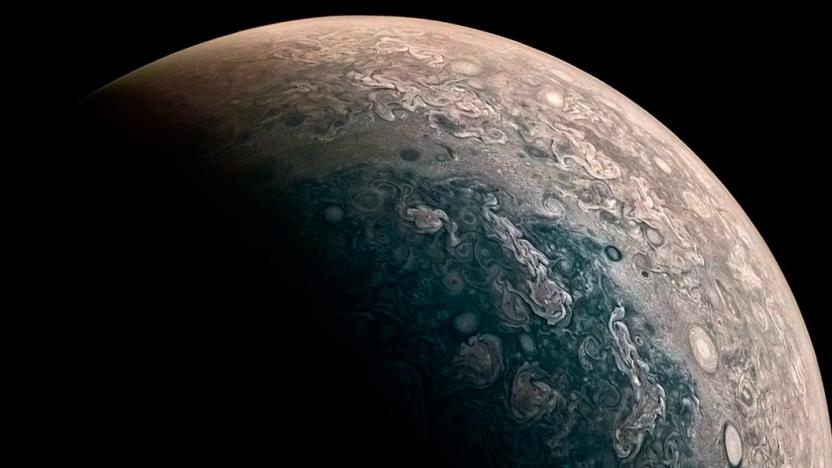
NASA probe Juno captures Jupiter's poles in glorious detail
In August 2011 NASA sent a probe the size of a basketball court into space on a mission to observe Jupiter. Now, five years later, the $1 billion dollar probe has something to show for it's 415 million mile journey. Named Juno, the probe has managed to photograph Jupiter's poles for the first time, capturing the planet's mysterious auroras and unique cloud formations after a few technical errors.
Tom Regan03.30.2017
NASA finds long-lost Indian lunar orbiter
India lost contact with its first lunar orbiter, the Chandrayaan-1, back in 2009. Now, NASA has revealed that the agency discovered its location in July 2016 after testing a method that can be used by future lunar missions. Chandrayaan-1 is a relatively tiny cubic probe that measures five feet on all sides, making it the perfect target for the radar experiment conducted by a team of Jet Propulsion Laboratory scientists. The team wanted to find out whether a technique used to observe small asteroids can also spot spacecraft orbiting the moon.
Mariella Moon03.12.2017
Tiny airborne probe could help local weather forecasts
To date, it hasn't been easy to get loads of airborne weather data beyond major airports. Airliners have had a sophisticated probe system (TAMDAR Edge) for over a dozen years, but that doesn't help much in those remote areas where you may only see smaller airplanes or drones. NASA is close to covering this gap, though: it recently started test-flying a relatively tiny, lightweight version of TAMDAR Edge aboard an Ikhana drone. The tech promises real-time weather data on virtually any aircraft, filling in local atmospheric conditions even in barren places like the Arctic. You could have clearer indications of when a thunderstorm is brewing in a very specific region, or track previously unrecorded conditions above hurricanes.
Jon Fingas02.11.2017